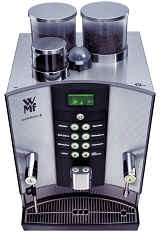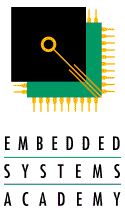Selecting a CAN Controller
By Olaf Pfeiffer
There are some 22 or so chip manufacturers producing microcontrollers with on-chip CAN interfaces. Many differ substantially from each other - what are the selction criterias we can go by?
[ Introduction | Performance | Implementations | Conclusions ]
| CANopen Application Examples |
|
CANopenIA |
| MyAcademy FREE online training on CAN and CANopen |
Introduction
After being around for 15 years, CAN (Controller Area Network) did not yet reach the peak of its lifetime. The number of CAN nodes sold and installed still rises year by year and currently exceeds the number of 200 million new nodes per year (figure for 2001). These sales figures are collected and published by the CiA, the CAN in Automation international users and manufacturers association that also organizes the yearly international CAN Conference. For information about the CiA and available technical documents see the web pages at www.can-cia.org.
 Traditionally CAN was primarily used in
automotive applications. Today, CAN is one of the best choices for
"embedded networking applications" that need to communicate between
several embedded 8-bit and 16-bit microcontrollers. Biggest current growth
sectors are "embedded machine control" applications: home appliances,
industrial machines or other machinery that use multiple microcontrollers
that need to communicate with each other. One of the latest examples in
this arena is a high-end coffee machine that uses microcontrollers that
are interconnected via CANopen.
Traditionally CAN was primarily used in
automotive applications. Today, CAN is one of the best choices for
"embedded networking applications" that need to communicate between
several embedded 8-bit and 16-bit microcontrollers. Biggest current growth
sectors are "embedded machine control" applications: home appliances,
industrial machines or other machinery that use multiple microcontrollers
that need to communicate with each other. One of the latest examples in
this arena is a high-end coffee machine that uses microcontrollers that
are interconnected via CANopen.
A big advantage of CAN compared to other network solutions is the price/performance ratio. Price wise, CAN is the most affordable network next to a regular serial channel. As a rule over thumb one can say that it costs about $3 to CAN-enable an existing microcontroller design. Replacing an 8-bit or 16-bit microcontroller with one that features a CAN interface costs about $1. An additional $1 is needed for the transceiver (line driver for twisted pair) and another $1 for connectors and additional PCB area.
The step "replacing a microcontroller with one that features a CAN interface" seems easy, as about 20 different semiconductor manufacturers produce one or multiple microcontrollers with one or multiple on-chip CAN interfaces. However, there are major differences in the CAN controllers available that can make a big difference when it comes to performance. The difference can very well be, that with one device the communication overhead entirely uses up all available MCU performance, whereas on another device the same communication task can be performed with a minimum of MCU execution time.
This article will point out some of the major differences between CAN controllers available and what the consequences are for the application. Due to the vast amount of different parts available, we cannot cover all controllers available. However we will focus on the most common available implementations and the most innovative enhancements seen today. For a complete listing of all CAN controllers, go to www.can-cia.org and check the product listings.
[ Introduction | Performance | Implementations | Conclusions ]
ESAcademy, 2002
All materials
provided 'as is'
see Disclaimer
